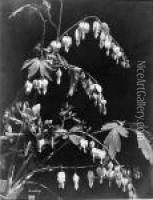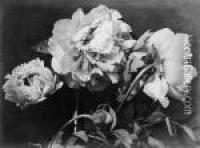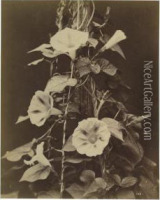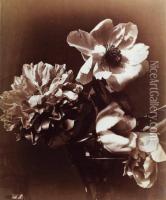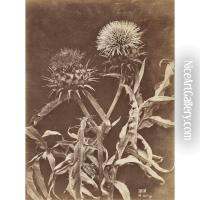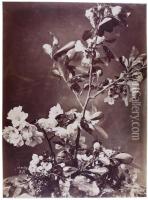Charles Hippolyte Aubry Paintings
Charles Hippolyte Aubry was a French photographer and printmaker, born in 1811 and passed away in 1877. Aubry is best known for his remarkable work in still life photography, a genre in which he excelled and contributed significantly during the mid-19th century. His career began in the realm of painting and printmaking, but he found his true calling in photography, an emerging art form at the time.
Aubry's transition from traditional printmaking to photography was driven by his desire to capture the intricate details and textures of flowers, plants, and fabrics with precision and clarity that painting and printmaking could not achieve. He utilized the collodion wet plate process, a popular photographic technique of his era, which allowed for the creation of images with fine detail and sharpness. This process involved coating a glass plate with a light-sensitive silver salt solution, exposing it to light in a camera, and then developing the image.
One of Aubry's most notable contributions to photography was his ability to use this technique to produce images that were not only scientifically accurate but also aesthetically pleasing. His photographs often featured elaborate arrangements of flowers and fabrics, showcasing his skill in composition and his keen eye for beauty. These works were highly regarded for their artistic quality and were considered superior to similar efforts by his contemporaries.
Aubry's photographs were not merely representations of objects; they were carefully crafted compositions that reflected his background in painting and printmaking. He approached photography with an artist's sensibility, paying close attention to composition, light, and texture. His work exemplifies the potential of photography as an art form, bridging the gap between traditional art and the new technology of photography.
Despite his contributions and the beauty of his work, Charles Hippolyte Aubry remains a somewhat obscure figure in the history of photography. His life and career were relatively short, and much of his work was not widely recognized during his lifetime. However, his photographs have gained appreciation in recent years, recognized for their technical excellence and artistic merit. Aubry's legacy lies in his pioneering approach to still life photography and his role in demonstrating the artistic possibilities of the medium.
